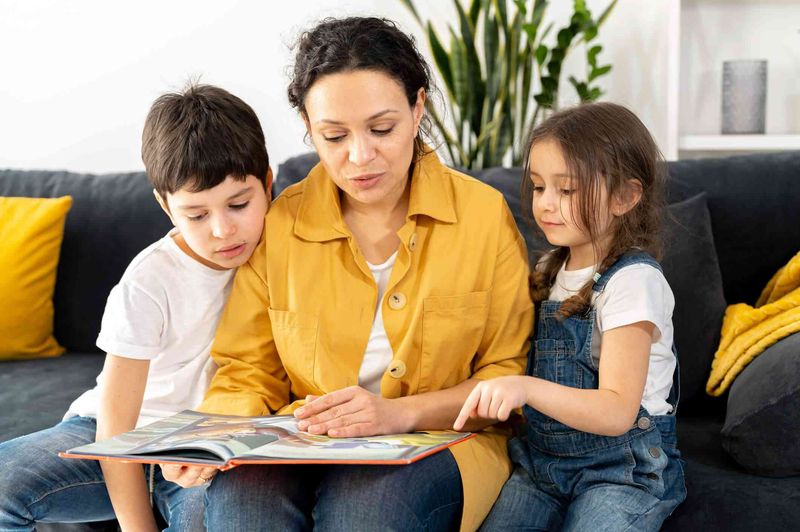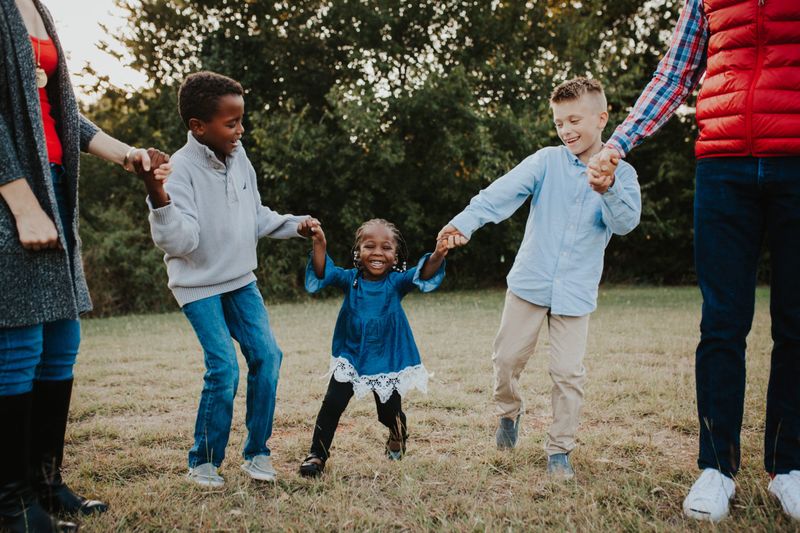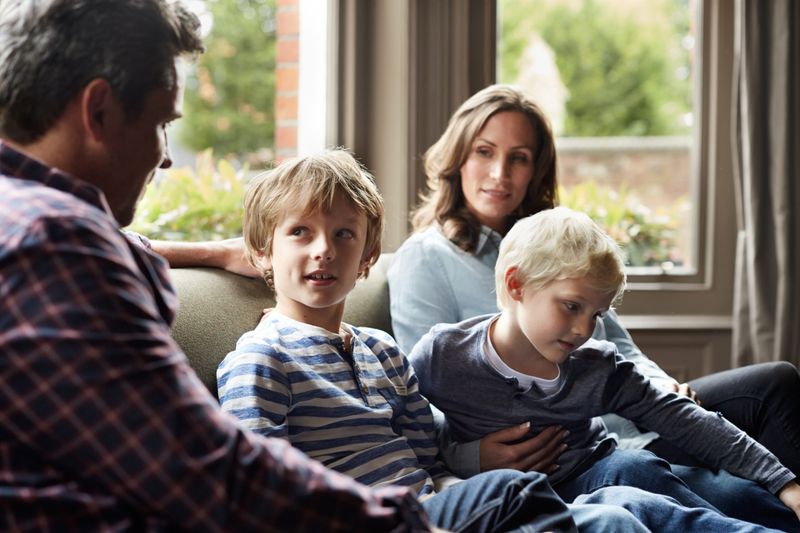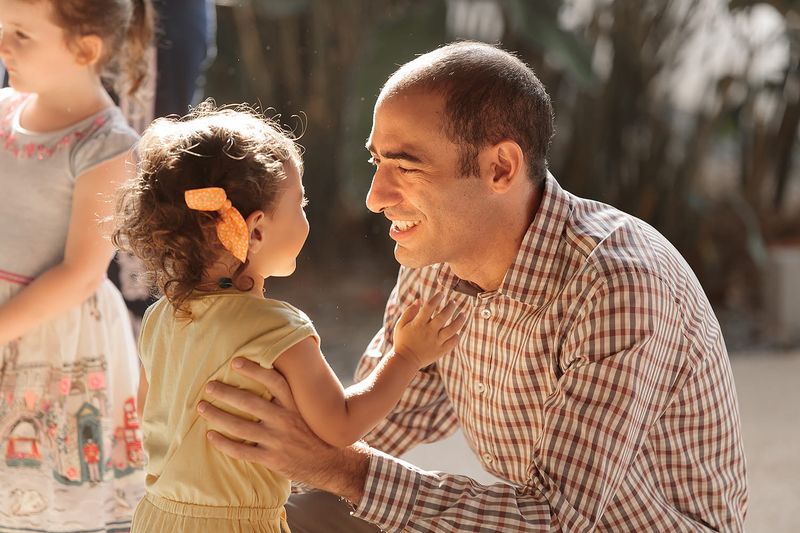15 Parenting Hacks From The ’50s That Were Surprisingly Brilliant

Ah, the 1950s—when kids actually played outside (without a screen in sight) and the milkman delivered fresh dairy to your doorstep like it was some sort of magical ritual.
Parenting back then was a whole different ball game. From strict bedtimes (that actually worked) to kids being sent outdoors with nothing but their imaginations and a ball, the 1950s had some pretty clever, no-nonsense hacks that still hold up today.
Imagine swapping your smartphone for a rotary phone, turning off all the distractions, and getting creative with some backyard adventures. Sure, we’re all about modern convenience, but there’s something oddly charming about those simpler, more intentional parenting practices.
It’s almost like stepping into a time machine, where everyone was a little more present, a little more creative, and a lot more resourceful. Maybe it’s time to bring a little 1950s magic back into the mix, don’t you think?
1. Scheduled Bedtimes Meant Sanity for Everyone

Ah, the sweet sound of silence by 8 PM. Back in the ‘50s, kids weren’t the only ones with a strict bedtime. Parents reveled in this nightly ritual, not just as enforcers but as celebrants of tranquility. Picture this: children tucked in, while adults indulge in well-deserved cocktails and conversations uninterrupted by the chaos of child-rearing.
The beauty of a scheduled bedtime wasn’t just in the quiet it brought, but in the consistency it taught. It was a time for parents to reconnect, unwind, and, dare I say, enjoy their offspring-free evenings. This wasn’t just a win for parents, but a secret weapon for marital harmony.
Who knew that a simple clock could wield so much power? Maybe it’s time we all set alarms—not just for morning wake-ups, but for nightly wind-downs. Cheers to bedtime bliss!
2. Play Outside Until the Streetlights Come On

Streetlights as curfews, anyone? Before the age of screens, kids had the run of the neighborhood until those streetlights flickered on. It wasn’t just playtime; it was a rite of passage. Bikes, scraped knees, and boundless imagination were the currency of childhood.
This outdoor escapade wasn’t just about fun. It was about building resilience, creativity, and friendships that weren’t formed by friend requests. Kids learned to negotiate rules, navigate social dynamics, and, most importantly, come home when the lights came on.
As a parent, I sometimes wonder if the real magic was in that unstructured play. The freedom to roam, explore, and return home just in time for dinner—no GPS tracking needed. Maybe we should bring back the streetlight curfew. After all, it’s free-range parenting at its finest.
3. Hand-Me-Downs Were a Lifestyle

Pass it on! In the ‘50s, hand-me-downs were more than practical—they were a badge of family heritage. Each garment carried a story, a history of siblings past, and perhaps a patched-up knee or two. It was frugality at its finest.
Before the explosion of fast fashion, clothing was a commodity meant to last. Hand-me-downs taught kids to appreciate what they had, fostering a sense of responsibility and respect for their belongings.
Today, in a world overwhelmed by trends and disposable fashion, the ‘50s hand-me-down culture offers a lesson in sustainability. Perhaps it’s time to dust off those sewing kits and embrace the charming art of patching and passing down. Your wallet and the planet might just thank you.
4. Family Dinners Were Sacred

Gather ‘round the table! In the 1950s, family dinners were more than a meal; they were a tradition. Picture a table laden with meatloaf, mashed potatoes, and the ever-mysterious Jell-O salad. It was a time for connection, conversation, and culinary adventures.
No distractions, no screens—just genuine face-to-face interactions. Families shared stories, laughter, and sometimes the occasional sibling squabble, all while passing the peas.
This sacred time reinforced family bonds and taught kids the art of conversation and compromise. In today’s fast-paced world, reviving the ritual of family dinners might just be the recipe for connection we’ve been missing. So, set the table, put the phones away, and dig into not just food, but family.
5. Chores Were Just Part of Life

Who needs a sticker chart when you’ve got chores? In the ‘50s, kids had real responsibilities, and chores were just a part of life. From mowing the lawn to washing dishes, these tasks were less about rewards and more about building character.
Parents didn’t need elaborate reward systems to motivate kids—they had something even better: expectations. Chores taught responsibility, time management, and the satisfaction of a job well done.
As a parent, I sometimes wonder if we’ve overcomplicated motivation. Perhaps a return to simple, consistent chores could teach today’s children the same invaluable life skills, without the need for gold stars. It’s time to bring back chore lists and let kids experience the pride of contributing to the household.
6. Manners Were Non-Negotiable

Mind your Ps and Qs! In the 1950s, manners weren’t optional—they were expected. A “please” and “thank you” were more than just words; they were social currency.
Parents enforced manners with an iron will, often with just a well-timed glance or ‘The Look.’ It was a lesson in respect, both given and received, and one that lingered far beyond the dinner table.
In a world where politeness sometimes feels forgotten, perhaps the ‘50s had it right. A simple reminder that kindness and respect should never go out of style. So, next time you’re at the table, remember: manners maketh the person.
7. DIY Toys & Creativity Overload

No batteries, no problem! In the 1950s, playtime wasn’t about fancy gadgets. Kids crafted their own fun with DIY toys and a hefty dose of imagination.
Cardboard boxes became castles, sticks transformed into swords, and the backyard was a world of endless possibilities. It was creativity in its purest form.
These homemade adventures didn’t just entertain—they instilled resourcefulness and innovation. Perhaps it’s time we traded screen time for some good old-fashioned DIY play. After all, a little chaos never hurt anybody, did it?
8. Mom (and Sometimes Dad) Actually Knew the Neighbors

Love thy neighbor! Back in the ‘50s, knowing the neighbors wasn’t just a pleasantry; it was a way of life. Moms (and sometimes dads) knew everyone on the block, creating a built-in village of watchful eyes and helping hands.
This community spirit meant someone always had an eye on the kids, whether you asked for it or not. It was like having a neighborhood watch without the formalities, fostering a sense of safety and trust.
In today’s world, where connections can feel fleeting, maybe it’s time to revive the art of neighborly camaraderie. After all, it takes a village to raise a child—or at least to keep an eye on them!
9. Home Remedies That Actually Worked

Got a cough? Try honey. Sore throat? Gargle with salt water. In the ‘50s, home remedies weren’t just old wives’ tales—they were trusted solutions, often backed by grandma’s wisdom.
These remedies weren’t about fancy ingredients or elaborate concoctions. They were simple, effective, and surprisingly backed by science as the years went on.
As a parent, I sometimes turn to these tried-and-true methods before reaching for the medicine cabinet. After all, if it worked for grandma, it’s worth a shot. Maybe it’s time we all embrace the simplicity of home remedies once more.
10. Letting Kids Be Bored

Boredom was a gift! In the ‘50s, parents weren’t tasked with entertaining their kids 24/7. Boredom was seen as an opportunity for children to find their own fun.
Left to their own devices (the non-digital kind), kids discovered new hobbies, played make-believe, and invented games from thin air. It was an era of self-discovery and creativity born from stillness.
Today’s constant barrage of entertainment can leave little room for imagination. Perhaps allowing kids to feel bored could spark creativity like it did back in the day. Sometimes, the best ideas come from idle hands.
11. Limited TV Time (Because It Was Limited)

TV time was a precious commodity in the 1950s, not the endless stream of content we see today. With only a couple of shows available each day, television was treated as a special event.
Kids gathered around the small black-and-white screen, savoring every moment of their favorite programs. The limited availability meant more time for books, games, and outdoor adventures.
As a parent, I sometimes yearn for the simplicity of limited screen time. Perhaps it’s time we rethink our endless viewing habits and treat TV as the treat it once was, reclaiming time for other pursuits.
12. Tough Love, But Real Love

Boundaries with a backbone—tough love was the name of the game in the ‘50s. Discipline wasn’t about harshness; it was about consistency and clear expectations.
Parents didn’t shy away from setting limits, but they did so with warmth and love. The rules were clear, and so was the affection. It was a balance that taught respect and nurtured growth.
In today’s parenting landscape, tough love might sound outdated, but its core values remain relevant. Perhaps it’s time to revisit this balanced approach, reminding us that discipline and love are two sides of the same parenting coin.
13. Kids Shared Rooms

Sharing is caring! In the ‘50s, kids often shared rooms, learning conflict resolution the old-fashioned way—by living in close quarters with their siblings.
This arrangement taught compromise, patience, and the fine art of negotiation. It was a lesson in coexistence, where personal space was a shared commodity.
As a parent, I sometimes wonder if the sibling rivalry was outweighed by the camaraderie born from shared spaces. Perhaps there’s a lesson here in finding harmony in togetherness. After all, a shared room is a shared adventure.
14. Walking to School Built Grit

Rain, snow, uphill both ways! In the ‘50s, walking to school wasn’t just a commute; it was an exercise in grit and determination.
Kids braved the elements, carrying their books and lunch pails, learning independence with each step. It was a daily rite that built resilience and self-reliance.
In today’s world of carpools and buses, the simplicity of walking to school might seem quaint, but it offered lessons in perseverance. Perhaps it’s time we encourage a bit more foot power and let kids walk their own paths.
15. Simple Birthdays, Big Magic

Birthdays were magical in their simplicity during the ‘50s. A homemade cake, a few balloons, and some friends from the neighborhood were all it took to create unforgettable memories.
It wasn’t about extravagance or pricey presents—it was about joy, laughter, and shared moments. These celebrations emphasized the essence of birthdays—love and togetherness.
In today’s world of elaborate parties and social media posts, perhaps there’s a lesson in embracing simplicity. After all, magic doesn’t need a price tag. It’s the little things that create the biggest smiles.
